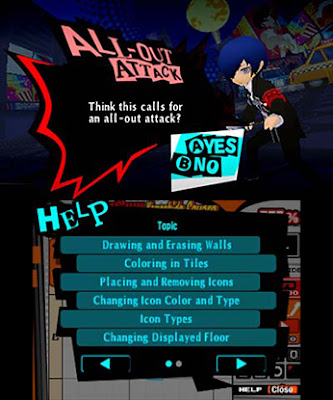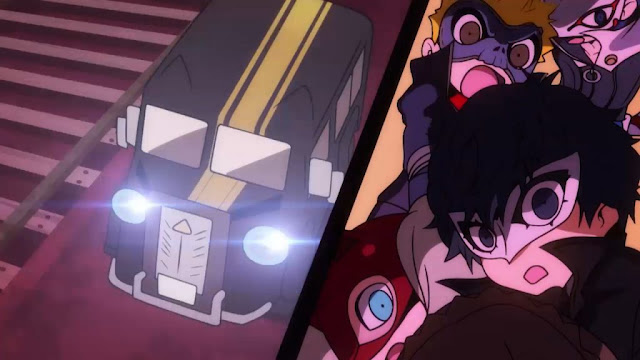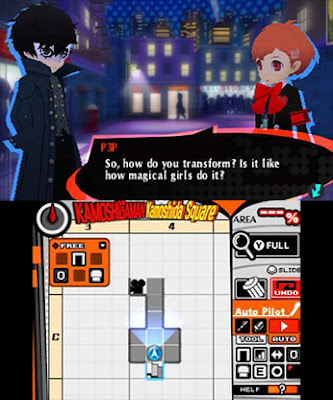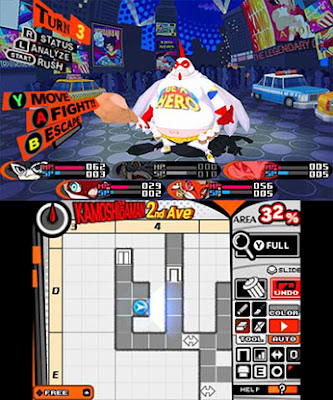Shadow of the Labyrinth gave adored characters like Aigis and Kujikawa Rise cutesy new chibi character designs and drew more than a few of its gameplay ideas from Etrian Odyssey. Charming crossover interactions between the cast of Persona 3 and 4 carried the game, but it had plenty to offer besides. This humble little dungeon crawler went on to net our 3DS Game of the Year award when it released. That Persona Q2: New Cinema Labyrinth can be considered in the same ballpark is a testament to how much Atlus respects its characters.
Where exploring the theater is concerned, Persona Q2 plays out much the same as the original (and, by extension, the aforementioned Etrian Odyssey games). Crawling through a handful of lengthy first-person dungeons wasn’t the core ingredient that made the previous game so enticing but it certainly didn’t hurt. You’re still methodically mapping out dungeons on the 3DS’ touch screen as you go, though there are some automated options if you want a faster and less personal experience. The chests strewn about act as rewards for completely exploring a dungeon, but you can open them with a couple dozen Play Coins. Other rewards can be scavenged repeatedly but you run the risk of bumping into monsters so there’s a tradeoff if you’re deep into a dungeon. A handy radar tells you roughly when enemy encounters will occur. While most fights are random encounters, giant FOEs (yes, that’s what they’re called) introduce tension by threatening to bump into you while you’re preoccupied. Careful expedition is the key to success here.
Conventional as it is, the mechanical conveniences and minor aspects that speak to the core of Persona make it oh so compelling. Party members besides Senoue can enlist the aid of a sub-Persona for greater team diversity and utility. Then there’s the requisite Persona fusion and evolution systems. If inventive dungeon exploration is the sole factor drawing you to Q2, you might be served better by Etrian Odyssey.
So just like Persona Q, you’re going to want at least passing knowledge of the Persona titles to get true mileage from this one. Considering the PS4 exclusive Persona 5 alone can gargle down 100 hours of your life and characters from Persona 3 and 4 show up too, that’s quite a bit of presumed investment for 3DS owners. Likewise, the fanservice extravaganza won’t mean as much if you don’t know who the heck these people are. Seeing the male and female protagonists of Persona 3 meet is one moment to anticipate, but might not mean much otherwise. On the flipside, there’s no need to have played the original Q so there’s that.
– Clark A.
Anime Editor













